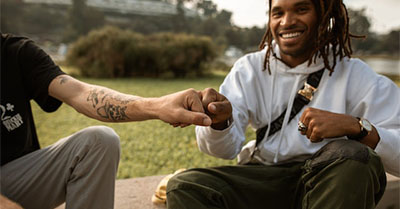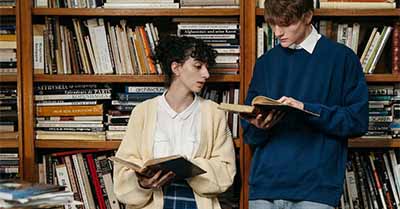Intermediate Reading Course. Section 1: The Basics
Main Idea and Supporting Details
Practice 1
In this exercise, you will practice distinguishing general and specific concepts. This skill is necessary to distinguish between general and specific ideas when reading a paragraph (that is, distinguishing main ideas from details).
Instructions. So far in this course, you have learned about paragraphs and main ideas and supporting details. In this exercise, you will see groups of words and phrases. One of them refers to a general concept while the others are specific ideas related to it. Your task is to Identify the general idea.
When you are finished, click “Answer” to check your answer.
Note. Your answers will not be submitted. When you leave this page, they will be deleted.
PDF Handout
Group 1: volleyball — swimming — sports — soccer
Sports. (Volleyball, swimming, and soccer are sports.)
close
Group 2: adjectives — parts of speech — adverbs — transitive verbs
Parts of speech. (Adjectives, adverbs, and transitive verbs are parts of speech.)
close
Group 3: profession — teaching — website design — research
Profession. (Teaching, website design, and research are professions.)
close
Group 4: anger — love — fear — emotions
Emotions. (Anger, love, and fear are types of emotions.)
close
Group 5: French — Danish — Spanish — European languages
European languages. (French, Danish, and Spanish are European languages.)
close
Group 6: Hawaii — California — American states — Texas
American states. (Hawaii, California, and Texas are American states.)
close
Group 7: Paris — Tokyo — Quebec — capital cities
Capital cities. (Paris, Tokyo, and Ottawa are capital cities; they are the capitals of France, Japan, and Canada.)
close
Group 8: bicycles — buses — means of transportation — cargo ships
Means of transportation. (Bicycles, buses, and cargo ships are means of transportation.)
close
Group 9: clothes — shirts — pants — dresses
Clothes. (Shirts, pants, and dresses are types of clothes.)
close
Group 10: dogs — birds — pets — cats
Pets. (Dogs, birds, and cats are animals people keep as pets.)
close
Group 11: comma — punctuation — question mark — colons
Punctuation. (Commas, question marks, and colons are types of punctuation.)
close
Group 12: computer parts — mice — hard drives — monitors
Computer parts. (Mice, hard drives, and monitors are parts of a computer.)
close
Back to the lesson
You’re all done. Congratulations!

Thanks to our supporters!
This material has been made possible by supporters like you. Learn how you can support us.

“What should I learn next?”
If you are ready, you can go to the next lesson to learn about the location of the main idea or use the navigation buttons to return to the lesson or choose another skill.
Thank you for Supporting Snap Language
Snap Language supporters make the creation of these materials possible.
Learn how you can support our work, get perks, and help us continue creating high-quality materials.
You can support us by simply white-listing this site.